We hope that you enjoy this article on 6 Fabulous European Lepidoptera, because each and every one of them deserves to be appreciated. As the second largest order of all insects, moths and butterflies give us some of the most beautiful sights in Nature.
There are over 180,000 species, or about 10% of all forms of life on earth. They inhabit every part of the world, except Antarctica. Obviously, these 6 species barely scratch the surface of those living in Europe. We hope this small sample gives you a thirst for more.
Peacock Butterfly
Peacock Butterfly Facts
- Leading off this article about 6 Fabulous European Lepidoptera comes the startlingly beautiful insect appropriately known as the Peacock Butterfly.
- For many reasons, this stunning Lepidoptera most frequently goes by the common name we have chosen to use. Yet, the beautiful butterfly also has another, general name it’s known by. That’s because it’s also often referred to as the European peacock.
- Among professionals, such as researchers, however, it’s better known by its technical name. Fortunately for the rest of us, though, that’s a much simpler to pronounce term than most such terms. That’s due to the fact that it bears the official name of Aglais io.
- It received that official moniker due to the efforts of the renowned Swedish researcher, Carl Linnaeus. He recorded the first official recognition of the invertebrate as a separate and distinct species. This scientifically noteworthy deed occurred in 1758.
- Entomologists originally classified it as the sole member of the genus Inachis. Subsequent research, however, later reassigned it to another. Due to the efforts of later researchers, it’s now located in the genus Aglais, along with other related species.
- Thankfully, the work of Nature and evolution appears to be maintaining a population base that’s both stable and sufficient. This further seems to hold true throughout the entirety of its natural range. The IUCN, therefore, presently has no listing for it.
- The Peacock Butterfly nevertheless does face some potential threats to its existence. In this regard, it follows the pattern of most species on the plant. Habitat degradation or loss pose a potential danger. Its greatest threat, though, is likely climate change.
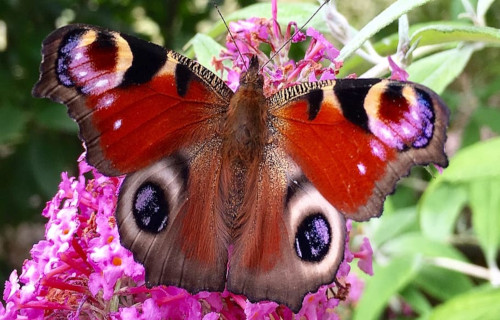
Peacock Butterfly Physical Description
Like many of its relatives, the remarkable Peacock Butterfly easily draws the eye of all those fortunate enough to encounter it. Unlike some of them, however, it merits that attention for more than just its distinctive appearance. It’s also has a respectable wingspan.
It further differs from many of its kindred in yet another way. That’s due to the fact that the creature displays no noticeable degree of sexual dimorphism. Distinguishing the two genders, therefore, frequently presents a problem for the average amateur viewer.
Mature individuals of both sexes attain an average wingspan measuring between 2.0 – 2.2 in (50 – 55mm). Exceptional specimens occasionally occur, of course. Yet even these scattered individuals rarely exceed this by much. Various factors, including environment, affect this.
It’s the visual aspect of the wings of the stunning Lepidoptera that garner the most attention, though. The underneath of the wings typically displays a uniform light brown. This appears in random patterns of shades and swirls. Irregular darker lines also cross the hindwings.
The upperside, however, displays as vastly different. Here is where the Peacock Butterfly earns its name. The top part of the forewing shows red, with brown patches. It also shows black-gray edges. Eyespots, like those of peacocks, also appear on the edges of each wing.
- Kingdom: Animalia
- Phylum: Arthropoda
- Class: Insecta
- Order: Lepidoptera
- Family: Pieridae
- Genus: Aporia
- Species: A. crataegi
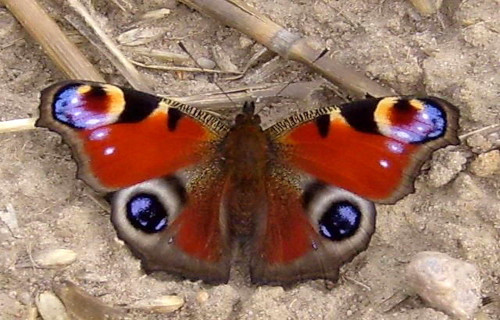
Peacock Butterfly Distribution, Habitat, and Ecology
Fortunately for it, the visually dazzling Peacock Butterfly inhabits a comparatively broad swathe of the globe. This same range also happens to include regions already well known for their abundance of natural beauty. It therefore fits right in with its surroundings.
Indeed, this marvel of evolution evolved as native to most of the continent of Europe. Yet its range doesn’t simply stop there. That’s due to the fact that population groupings of this wondrous Arthropod also appear in temperate Asia. It’s further seen as far east as Japan.
Throughout the entirety of that range, though, it displays the same preferences in its choice of habitat. These, however, also remain comparatively broad. Populations of the beauty inhabit a wide range of locations, though all appear in areas of temperate conditions.
This flexibility also includes a range of altitudes. Concentrations of the invertebrate appear at altitudes ranging from lowland sections, to altitudes of up to 8,200 ft (2,500 m) above sea level. These include such locations as meadows, fields, pastures, woods, parks, and gardens.
Adult specimens of the Peacock Butterfly feed in much the same manner as other butterflies. These feed primarily on the nectar of various local plant species, such as dandelions, clover, and willows. Some also augment this by feeding on tree sap and rotten fruit.
Males tend to be territoral. Females, though, move over large areas. Females lay eggs in early spring, typically in batches of around 400. Its eye-spots deter most, though not all, avian predators. Rodents, however, are not bothered by these, and thus form its major predator.
White Ermine
White Ermine Facts
- The second of these 6 Fabulous European Lepidoptera is one that hides a dark secret behind its beauty, the White Ermine.
- The gorgeous invertebrate also forms a bit of a puzzle. That’s because it presents a few challenges for entomologists. This holds true since it does not always display the same color patterns. This further sometimes makes it hard to identify.
- Like many species in its region, the first formal scientific recognition of it as a distinct species occurred due to the work of one man. The renowned Swedish zoologist made that acknowledgement of it as a separate species in the year 1758.
- The common name applied to the invertebrate isn’t the only one it’s know by, however. That’s because professional researchers typically refer to it by its formal scientific name. That’s the somewhat hard to pronounce name of Spilosoma lubricipeda.
- This seemingly delicate Lepidoptera also conceals a dangerous secret. It serves as an excellent example of how beauty often conceals danger in nature. This insect has few, if any, natural predators because its body contains relatively powerful toxins.
- Due to its numbers and extensive range, the IUCN does not currently have a listing for it. Yet the Catalogue of Life does have a listing for it. While its numbers currently seem stable, many fear for its future, due to changing conditions within its habitat range.
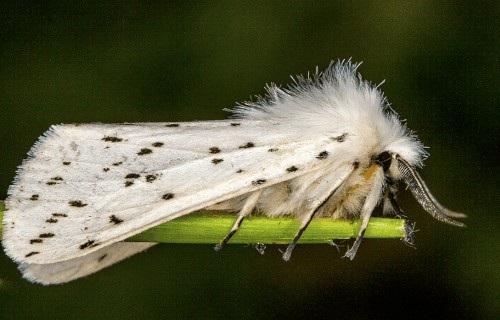
CCL: https://bit.ly/1E6HPMf
White Ermine Physical Description
The beautiful White Ermine represents a comparatively moderate-sized species of moth. Individuals typically attain an average wingspan of between 1.3 and 1.9 in (34-48 mm). While many moths display some degree of sexual dimorphism, it does not.
The wings usually display a milky white color, yet individuals vary greatly in other ways. The most noteworthy difference between individuals remains the presence of black dots. Most individuals present many, but others present few, or even none at all.
The antennae form yet another trait which sets this specimen apart from many other moths. That’s because, in its case, these attain much greater lengths relative to body size. The precise evolutionary reason for this, however, currently eludes researchers.
The stunning White Ermine further catches the eye due to another reason. That’s the contrast between the color patterns of its wings, and that of its abdomen. This part of the marvelous arthropod typically displays as a moderately bright orange in color.
- Kingdom: Animalia
- Phylum: Arthropoda
- Class: Insecta
- Order: Lepidoptera
- Family: Erebidae
- Genus: Spilosoma
- Species: S. lubricipeda
White Ermine Distribution, Habitat, and Ecology
Quite fortunately, the lovely White Ermine evolved as native to a comparatively broad swathe of the globe. While broad, however, that range also qualifies as highly specific. More specifically, the arthropod only appears naturally in the temperate zone of Eurasia.
That highly specific range of habitation extends from Europe through several modern countries. These include those of southern Siberia and Kazkhstan, to those of China, Korea, and Japan. Within that range, though, it thrives in comparative abundance, for now.
It’s also impressively adaptable. That’s true since it’s adapted to several types of habitats. These include hedgerows, heathland, moors, forests, and even gardens. This species typically flies between May and September, depending on the precise area.
The larvae of the White Ermine feed on a wide variety of plants, most typically herbaceous ones. The exact varieties of these naturally vary between regions. Due to the presence of toxins in its body, the species has few natural predators of its own.
Though the species still appears rather numerous, many people fear for its future. Like many invertebrates, it remains especially vulnerable to climate change. Several other factors, such as habitat loss also threaten its continued existence as a species, though.
Turnip Moth
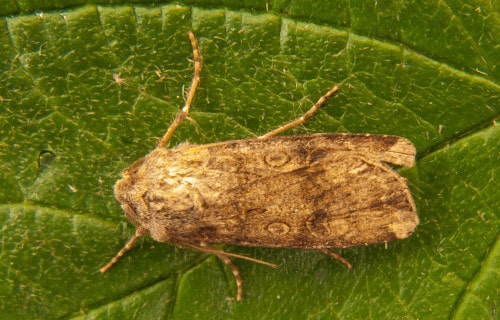
CCL: https://bit.ly/1eBd9Ks
Turnip Moth Facts
- The third entry out of our 6 Fabulous European Lepidoptera is one that, regrettably, remains quite controversial, the Turnip Moth.
- The simple term applied to it serves as the common name for a small but noteworthy Lepidoptera. Its scientific name, meanwhile, remains somewhat hard to pronounce. That’s because scientists know it by the official term of Agrotis segetum.
- Regardless of which term one uses to refer to it, however, most people have strong opinions about it. The first formal recognition of it as a species, meanwhile, took place in 1775. Ignaz Schiffermuller and Michael Denis hold that distinction.
- This tiny Lepidoptera also represents a particular variety of cutworm. Within most of its range of habitation, it now constitutes a threat to crops. This unfortunate fact now qualifies it as an invasive species, at least in the minds of some groups.
- For the moment, the Turnip Moth constitutes one of those rare species with a sizeable and stable population. This further holds tur throughout the entirety of its natural range. It’s also been spread to much of the world through the actions of man.
- Due to these factors, the IUCN currently has no listing for it on the organizations Red List. Certain factors could nevertheless threaten its existence in the future. Chief among these, of course, would be the dangers of habitat loss and climate change.
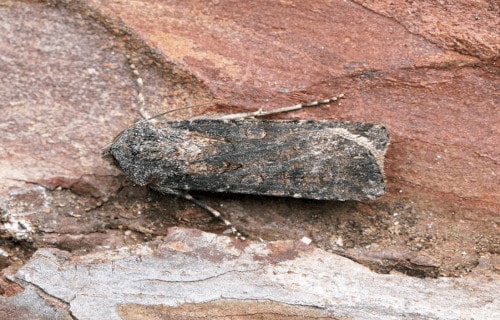
CCL: https://bit.ly/1ryPA8o
Turnip Moth Physical Description
Perhaps the most notable characteristic of the Turnip Moth remains its physical description. This statement holds true due to a remarkable trait displayed by the insect. Both the size and color patterns of this arthropod vary significantly between individuals.
As a result of this, the species understandably displays comparatively extreme levels of the trait of sexual dimorphism. This fact, therefore, commonly creates confusion. It frequently leads to difficulty in telling the genders apart, even for experts.
Certain physical patterns between the sexes do remain relatively consistent, however. Among these is the fact that the females present forewings colored dark gray, brown, or black. The hindwings of this gender meanwhile, generally display as a light gray in color.
In contrast, though, the forewings of the male of the species typically present as much lighter in color. Their hindwings, on the other hand, usually develop as either whitish or light gray. This degree of difference in appearance truly sets it apart from most moths.
The other various physical attributes of the Turnip Moth, however, remain reasonably consistent with those of its kind. The body of the invertebrate, for one, averages about 0.85 in (22 mm) in length. Its wingspan, though, commonly reaches as much as 1.7 in (45 mm).
- Kingdom: Animalia
- Phylum: Arthropoda
- Class: Insecta
- Order: Lepidoptera
- Family: Noctuidae
- Genus: Agrotis
- Species: A. segutum
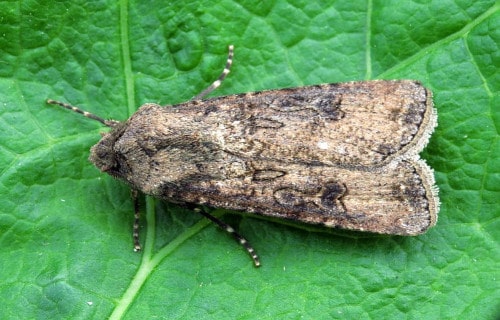
CCL: https://bit.ly/1E6HPMf
Turnip Moth Distribution, Habitat, and Ecology
The delicate-seeming yet destructive Turnip Moth actually evolved as endemic to a wide swathe of the globe. More specifically, it developed as native to much of the continent of Europe. International commerce, however, led to its establishment elsewhere.
As a result of this, it’s now firmly entrenched in portions of both Asia and Africa as well. Wherever it appears, though, the arthropod displays an ability that further aids in its survival. That’s because it seems to be highly adaptable to a wide variety of habitat types.
Due to this clear evolutionary advantage, it frequently appears in many ecosystems. These habitats include not only farmland, parks, and gardens, but also forests, and even some areas of sand dunes. This tendency, therefore, leads it into conflict with humans.
The highly voracious larval form of the insect feeds on a wide variety of plants. In this characteristic, it clearly follows the habit of most related species. The preferred food of the creature, however, includes cotton, tomato, corn, legumes, sugar beets, and tobacco.
The larvae of the Turnip Moth further feed on the entire plant. this, in fact, extends from the leaves to the roots, thereby destroying everything. Thus, most farmers in the regions it inhabits consider it to be not only invasive, but extremely harmful, as well.
Hummingbird Hawk Moth
Hummingbird Hawk Moth Facts
- Our next choice of 6 Fabulous European Lepidoptera is the absolutely stunning one known as the Hummingbird Hawk Moth.
- This Lepidoptera primarily goes by the common name that it does due to its the nature of its flight. Entomologists, however, know it better by its official scientific name. That, though, is the hard to pronounce term of Macroglossum stellatarum.
- Whatever name one chooses to use to refer to it, it’s a fabulous creature. The first recognition of it as a separate and distinct species, meanwhile, occurred in the year 1758. It further owes its acknowledgement to a famous name in science.
- That’s because the famous Swedish botanist, Carl Linnaeus, made that original scientific classification of the species. He also published it in the 10th edition of his Systema Naturae. This gives the insect a historic place in the annals of entomology.
- Its relative fame doesn’t end there, though. That’s due to the fact that it held a place in important, groundbreaking scientific studies. More precisely, in 2018, a lengthy and detailed project completed the sequencing of its entire genome and mitogenome.
- There’s also more good news. For the moment, the Hummingbird Hawk Moth appears to be maintaining a sizeable and stable population. This delightful trend further seems to hold true throughout the entirety of its natural range.
- The IUCN, therefore, presently has no listing for it on the organizations Red List of Threatened Species. The species nonetheless could face threats to its existence in the future. That’s because habitat loss and climate change continue to escalate.
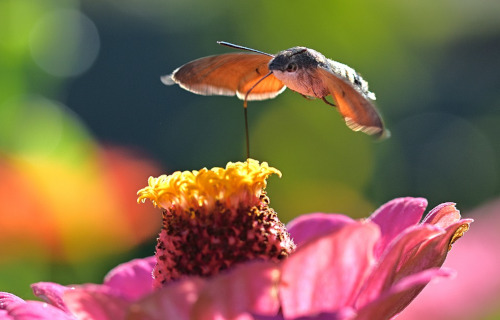
Hummingbird Hawk Moth Physical Description
The magnificent Hummingbird Hawk Moth adroitly proves that size holds no relation to beauty in Nature. This holds true since it only qualifies as a medium-sized type of moth, in terms of wingspan. Also unusually, it shows no noticeable sign of sexual dimorphism.
This lack of visual difference between the genders extends to both size and appearance. As a result, mature specimens of both sexes attain an average wingspan of about 1.8 in (4.6 cm). While not large, those wings nevertheless impress one, just due to their beauty.
The forewings typically show brown and a crisscrossing of thin black lines. The hind wings of the arthropod, though, usually show orange and display a black edge. Although the wings grow medium-sized, the body remains proportionately larger than related species.
The proboscis of the amazing Hummingbird Hawk Moth, however, developed in a remarkable manner. It’s highly elongated, again mimicking the hummingbird. The arthropod even possesses a short tail tipped with numerous soft, brush-like bristles.
- Kingdom: Animalia
- Phylum: Arthropoda
- Class: Insecta
- Order: Lepidoptera
- Family: Sphingidae
- Genus: Macroglossum
- Species: M. stellatarum
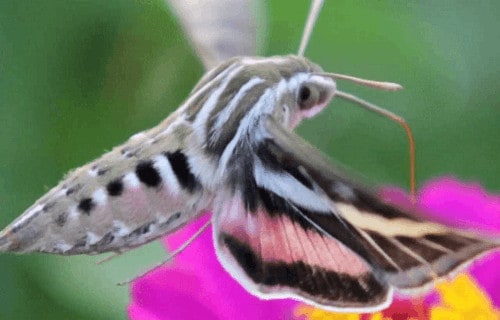
Hummingbird Hawk Moth Distribution, Habitat, and Ecology
The marvelous Hummingbird Hawk Moth possesses yet another strong evolutionary advantage. That’s the fact that it evolved as native to a huge portion of the globe. More precisely, its natural distribution covers much of Asia, Africa, and also Northern Europe.
Even beyond that, most individuals develop as relatively strong fliers. As a result, the species appears virtually anywhere in the hemisphere during the summer. This represents yet another manner in which it differentiates itself from the majority of its peers.
Adding even more to its resume, the amazing invertebrate also evolved as highly adaptable. Due to that trait, it often inhabits a wide variety of habitats. These include regions as diverse as forests, meadows, parks, and even private gardens around human habitations.
Unfortunately for its fans, though, it has a short lifespan. Because of this trait, however, it developed another helpful trait. The marvel of Nature breeds quickly. Therefore, anywhere from 2-4 generations are born in a single season. This often depends on the region, as well.
The mature adults of the Hummingbird Hawk Moth feed exclusively on nectar from plants such as the Red Valerian and Honeysuckle. Thankfully, the species itself, however, has few natural predators. This mainly holds true due to its incredible camouflage.
Death’s-head Hawkmoth
Death’s-head Hawkmoth Facts
- The fifth creature in the compendium of 6 Fabulous European Lepidoptera is truly unique, the Death’s-head Hawkmoth.
- Distinctively, the eye-catching common name for this amazing Lepidoptera remains that of the one used here. Perhaps most notably, though, the term actually serves as the common name for a total of three species within the genus Acherontia.
- The distinctiveness of these three forms, however, does not simply stop there. That’s because, in addition to the astonishing obvious physical trait, other facts also set it apart from most other types of moths. These, in fact, are fascinating in their own right.
- First of all, the astonishing and highly unusual Death’s-head Hawkmoth evolved the ability to emit a high-pitched chirp. This action only occurs, though, when the arthropod feels either threatened or irritated. Few insects can make sounds internally.
- Secondly, all three varieties also evolved as relatively rapid fliers. In point of fact, one of them, the Acherontia atropis, constitutes the fastest known moth on earth. That’s because individuals of that species can reach speeds of up to 30 mph (48 kph).
- The IUCN, furthermore, does not currently have a listing for any of the three varieties. That’s surprising, given the fact that each of them qualifies as quite rare. Like many creatures, it obviously faces threats such as climate change and habitat loss.
Death’s-head Hawkmoth Physical Description
Not surprisingly, physical differences naturally exist between the different types of Death’s-head Hawkmoth. All three types, however, also as is to be expected, remain quite similar in terms of appearance. Many general descriptions therefore apply to them all.
It must be pointed out, though, that measured adult wingspan varies significantly, even within the same gender and species. While not unknown, this trait definitely qualifies as uncommon. Due to this fact, adults range in width of wings from 2 – 8 in (5 – 20 cm).
In addition, like the majority of Lepidoptera, this marvel of Nature displays a moderate degree of sexual dimorphism. As a result of this physiological trait, in its case, females generally develop slightly larger than the males. These also tend to be bulkier in shape.
The body of the magnificent Death’s-head Hawkmoth also displays a comparatively thick, bullet-shaped form. The two forewings further develop long and narrow. Yet the hindwings, however, appear much shorter, like most related forms of invertebrate.
Its coloring also varies, quite understandably. But these typically consist of combinations of shades of brown, black, gray, and yellow. The astounding presence of a human skull-like marking on the back of the thorax, however, represents its most memorable feature.
- Kingdom: Animalia
- Phylum: Arthropoda
- Class: Insecta
- Order: Lepidoptera
- Family: Nymphalidae
- Genus: Apatura
- Species: A. iris
Death’s-head Hawkmoth Distribution, Habitat, and Ecology
The species bearing the common name of Death’s-head Hawkmoth also have different habitat ranges. That alone sets them apart from many of their peers. One appears in parts of Europe. The other two members of the genus, however, live in scattered sections of Asia.
All forms of this amazing insect, furthermore, seem to be highly adaptable to varying habitats. As a general rule, though, the insect appears in regions with substantial foliage. This most commonly includes temperate forests, as well as parks, and even home gardens.
The larval form of the Death’s-head Hawkmoth stays on or near a single host plant. These it feeds on voraciously. It shows no preference for type of host. The adults show a preference for honey, in addition to fruit. As a result, adults often raid the hives of honeybees.
Its own natural predators, meanwhile, consist of the same as other moths. These mainly consist of the various birds found in its region. Many bats also love to feed on it, though. Finally, the chirping ability it evolved serves the intended purpose of deterring these.
Elephant Hawk Moth
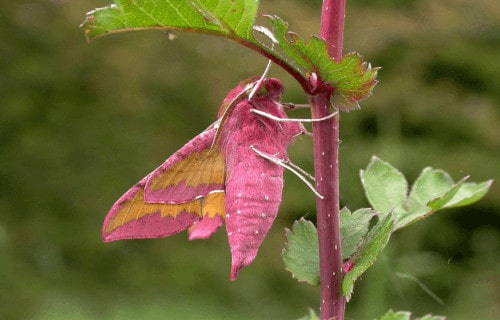
CCL: https://bit.ly/1ryPA8o
Elephant Hawk Moth Facts
- Our sixth and final, but certainly not least, of these 6 Fabulous European Lepidoptera is the surprising important Elephant Hawk Moth.
- The unusual term employed herein serves as only one of the common names applied to this magnificent Lepidoptera. The other term often used for it’s actually very similar in nature. That’s the redundant term of Large Elephant Hawk Moth.
- Its formal scientific name, meanwhile, remains that of the hard to pronounce Deilephila elpenor. The highly respected Swedish botanist and naturalist Carl Linnaeus made that first recognition of the species. He accomplished this in the year 1758.
- Both of the distinctive, and confusing, common names spring from the same source. That’s because their origins lie in the appearance of the larval form of the invertebrate. This occurs because many people feel this form resembles the trunk of an elephant.
- The fabulous Elephant Hawk Moth also stands out from many of its peers for another, unrelated reason. For the moment, its population numbers appear to be both sufficient and stable. This further holds true throughout the entirety of its range.
- The IUCN, therefore, presently has no listing for the arthropod on its Red List of Threatened Species. The marvelous creature nonetheless likely faces several potential threats. Like many species, these primarily consist of habitat loss and climate change.
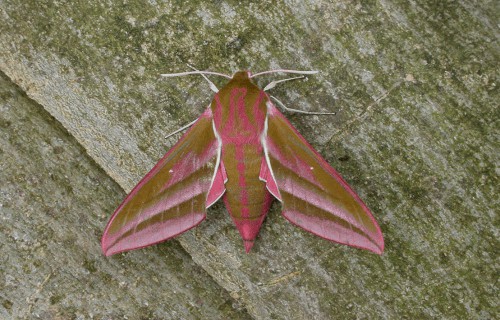
CCL: https://bit.ly/1ryPA8o
Elephant Hawk Moth Physical Description
The magnificent Elephant Hawk Moth, despite the term, impresses for reasons other than sheer physical size. That’s because, from that perspective, it’s only average-sized. It does, however, differ physically from most moths in one certain way.
That’s due to the fact that, unlike many related creatures, it displays no appreciable sexual dimorphism. That’s not to say that no differences in the genders exists, of course. Physical variations between the sexes do occur, but usually remain too small to notice.
Typically, a mature individual has a wingspan measuring roughly 2-2.8 in (50-70 mm). This variety of Lepidoptera also evolved as spectacularly colored. In point of fact, the gorgeous insect appears to the eye to shimmer with green and red when in motion.
The thorax and head of the Elephant Hawk Moth, furthermore, developed as segmented. This section of the body also develops as quite slender, at least when compared to the rest of its body. Its legs also generally develop as extremely thin and colored bright white.
- Kingdom: Animalia
- Phylum: Euarthropoda
- Class: Insecta
- Order: Lepidoptera
- Family: Sphingidae
- Genus: Deilephila
- Species: D. elpenor

CCL: https://bit.ly/1ryPA8o
Elephant Hawk Moth Distribution, Habitat, and Ecology
The visually stunning Elephant Hawk Moth has yet another factor working in its favor. That’s because it evolved as endemic to a comparatively wide region of the globe. Amazingly, this zone of habitation actually extends through large sections of both Europe and Asia.
Within this extremely large zone, it appears in regions including Ireland and Great Britain, as well as much of, Russia. It may also be present in northern parts of the Indian subcontinent, Korea, and Japan. Evidence for this exists, but remains inconclusive for now.
It’s also been introduced into other parts of the world. This occurred via the actions of man, both intentionally and unintentionally. The gorgeous arthropod therefore now appears even in portions of North America. There, it’s been spotted in British Columbia, in Canada.
In most portions of its native range, the adults appear from May to July. The marvel of Nature also quite often appears in urban settings in the evening. There, it’s frequently observed feeding in parks and even home gardens. It’s therefore proven to be adaptable.
The caterpillars further live from July to September, at which time when these usually pupate. The remarkable arthropod will also sometimes produce two broods in a year. This provides the invertebrate a distinct advantage over many related species.
The adult Elephant Hawk Moth primarily feeds at night in the wild. It modifies that in urban areas, however. Like many types of moth, though, it has preferred food sources. Thus, it often takes nectar from garden plants like honeysuckle and petunias.
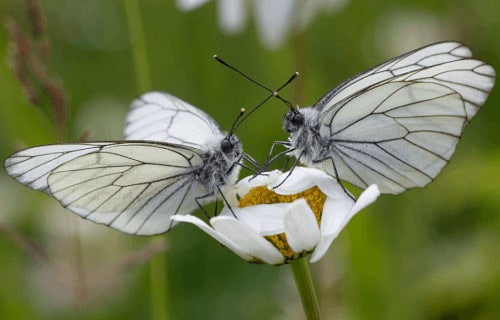
CCL: https://bit.ly/1xMszCg
6 Fabulous European Lepidoptera
We sincerely hope that you have enjoyed learning about these 6 Fabulous European Lepidoptera that we have presented for you here. These, and the countless thousands of other related species never cease to amaze us with their beauty and variety.
But many of them, like so many other forms of life in the world today, find themselves in peril. Many factors threaten their continued existence, and it is up to us to prevent their tragic loss. Let us take every measure we can to preserve them for our posterity to enjoy.
Check out our other articles on 7 Bizarre and Unusual Birds, 7 Truly Astounding Geological Wonders, Wonderful Wild Cats of the World, 9 Bewildering African Plants
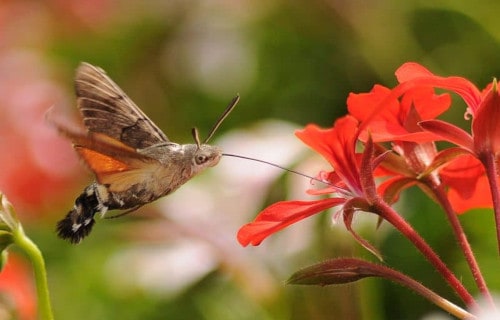
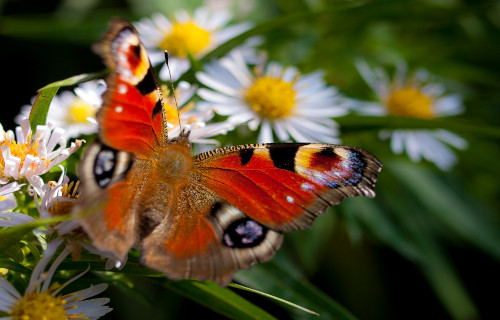

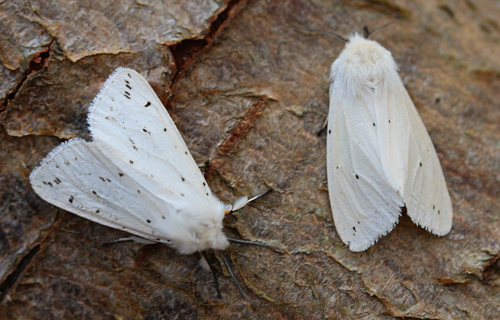
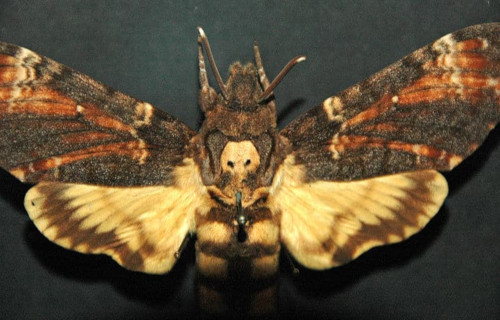

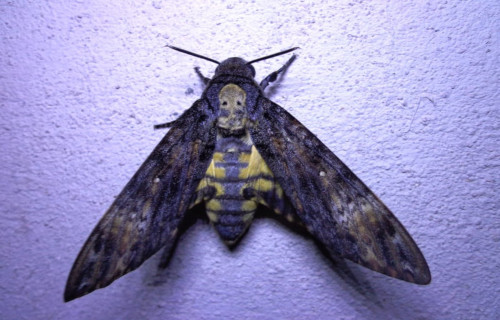









Leave a Reply